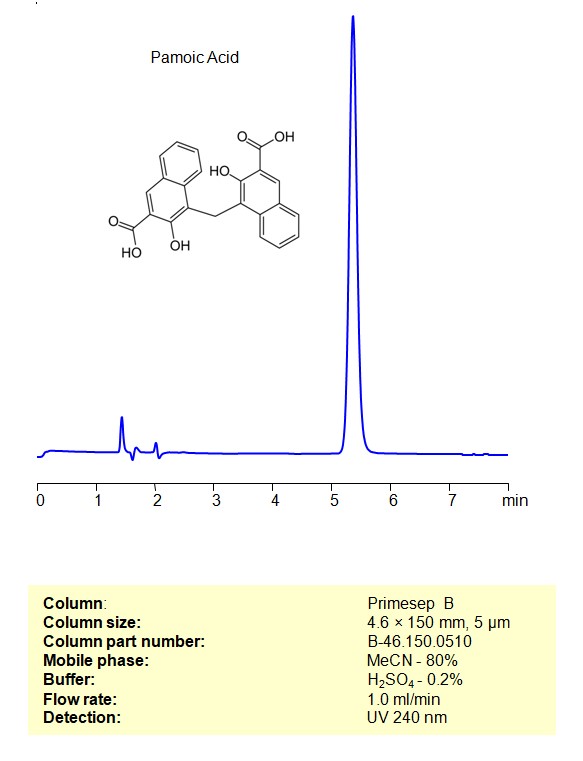HPLC Method for Analysis of Pamoic acid on Primesep B by SIELC Technologies

High Performance Liquid Chromatography (HPLC) Method for Analysis of Pamoic acid
Pamoic acid, also known as embonic acid, is a compound used in the formation of salts, particularly pamoate salts. The pamoate salts of various drugs are often employed to enhance their solubility, stability, and overall pharmaceutical properties. Pamoic acid itself is characterized by its ability to form stable complexes with a variety of drugs, and these complexes can be more easily processed into pharmaceutical formulations. The use of pamoic acid and its salts is common in the pharmaceutical industry to improve the bioavailability and effectiveness of certain medications. The formation of pamoate salts is a strategy employed in drug development to optimize the therapeutic delivery and performance of various pharmaceutical compounds.
Pamoic acid can be retained, and analyzed using a Primesep B mixed-mode stationary phase column. The analysis utilizes an isocratic method with a simple mobile phase consisting of water, acetonitrile (MeCN), and sulfuric acid as a buffer. Detection is achieved using UV 235 nm
| Column | Primesep B, 4.6 x 150 mm, 5 µm, 100 A, dual ended |
| Mobile Phase | MeCN/H2O -80% |
| Buffer | H2SO4 – 0.2% |
| Flow Rate | 1.0 ml/min |
| Detection | UV 240 nm |
| Class of Compounds | Acids, Aromatic carboxylic acids |
| Analyzing Compounds | Pamoic acid |
Application Column
Primesep B
Column Diameter: 4.6 mm
Column Length: 150 mm
Particle Size: 5 µm
Pore Size: 100 A
Column options: dual ended





